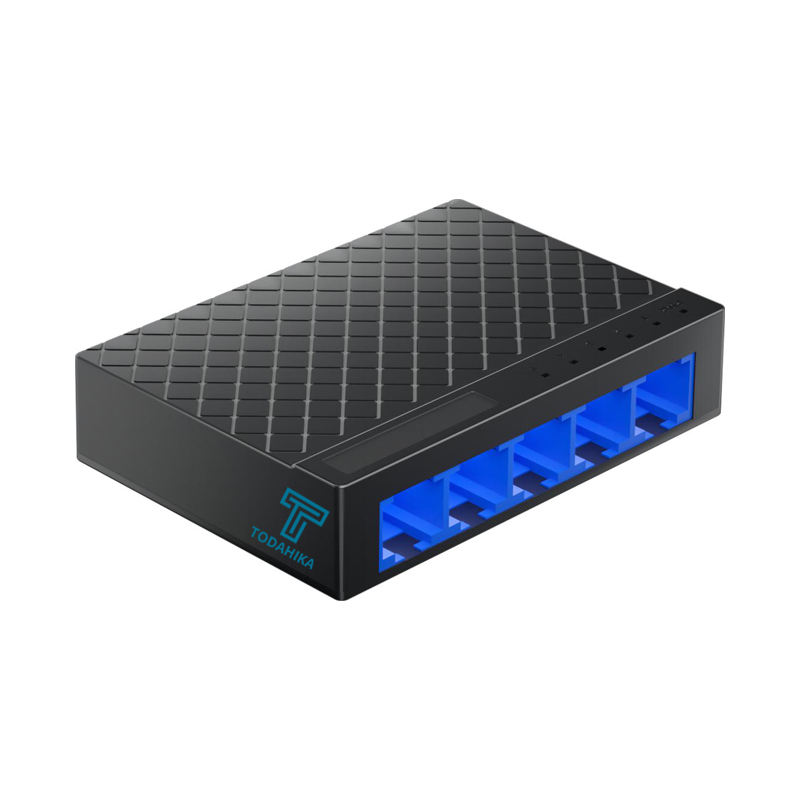In the networking world, two basic devices often appear: switches and routers. Although both play a vital role in connecting devices, they have different functions in a network. Understanding the difference between the two can help businesses and individuals make informed choices when building or expanding their network infrastructure.
The role of network switches
Network switches operate within a local area network (LAN) to connect multiple devices, such as computers, printers, and IP cameras. Its main function is to ensure efficient communication between these devices by directing data to the correct destination within the network.
Switches identify devices on the network by using MAC (Media Access Control) addresses. When a device sends data, the switch forwards it specifically to the intended recipient rather than broadcasting it to every connected device. This targeted approach helps conserve bandwidth and increase network speeds, making the switch ideal for high data traffic environments such as offices, schools and data centers.
The role of router
Unlike a switch, which is limited to a single network, a router acts as a bridge between different networks. In a typical home or business setup, a router connects the local network to the Internet. It acts as a gateway that manages incoming and outgoing data traffic, ensuring that data from the Internet reaches the correct device within the LAN and vice versa.
Routers use IP (Internet Protocol) addresses to forward data between networks. They handle a wider range of functions than switches, including assigning IP addresses to devices within the network, managing network security, and providing firewall protection.
Key Differences Between Switch and Router
Here’s a breakdown of the main differences between the two devices:
Function and scope:
Switch: Operates within a single local network, connecting devices and facilitating the exchange of data between them.
Router: Connects different networks, typically linking a local network to the Internet and managing data traffic to and from external sources.
Addressing system:
Switch: Uses MAC address to identify and communicate with devices. This approach is very effective for managing data flow within a closed network.
Router: Uses IP addresses to route data between networks, which is essential for Internet communication and access to external networks.
Data routing and data forwarding:
Switch: forwards data directly to specific devices within the network, making internal data flow more efficient.
Router: Routes data across different networks, ensuring that the data reaches the correct destination, whether inside the local network or outside the network.
Security features:
Switches: Generally have basic security options, focusing on internal data management. However, managed switches offer some advanced security features such as VLAN (virtual LAN) segmentation and traffic prioritization.
Router: Has built-in security features such as firewall, NAT (Network Address Translation), and sometimes VPN support. This helps protect the network from external threats and unauthorized access.
Use cases:
Switches: Ideal for environments where multiple devices need to communicate within the same network, such as offices, schools, and data centers.
Router: Essential for connecting your local network to external networks, such as the Internet, making it an essential device for home and business networks.
Do you need both?
For most setups, a switch and router are required. In a typical home network, a router connects your devices to the Internet, and a switch (either integrated into the router or separate) manages the connections between devices on the same network. For enterprise and large environments, dedicated switches are often used to efficiently handle internal traffic, while routers manage the connection between the LAN and the wider Internet.
in conclusion
Switches and routers work together to create a seamless and efficient network, with each switch fulfilling a specific role. Switches optimize communication within a network by directing data to specific devices, while routers manage external connections, linking local networks to the Internet and protecting data traffic. By understanding the differences between these two devices, you can make more informed decisions about your network infrastructure and ensure it meets your connectivity and security needs.
As technology continues to advance, switches and routers are becoming more sophisticated in their capabilities, providing businesses and individuals with greater control over the performance and security of their networks.
Post time: Oct-30-2024




